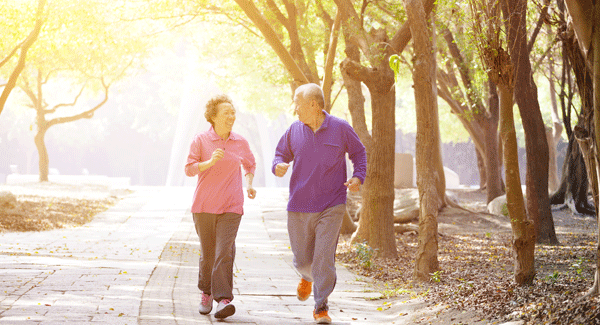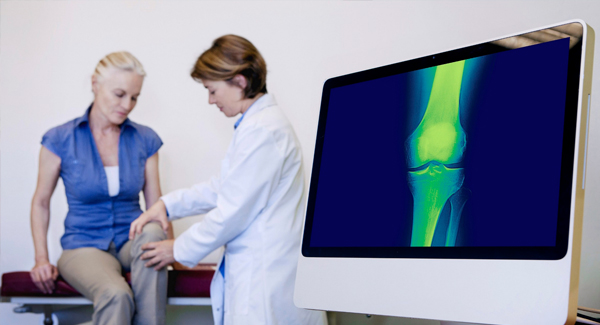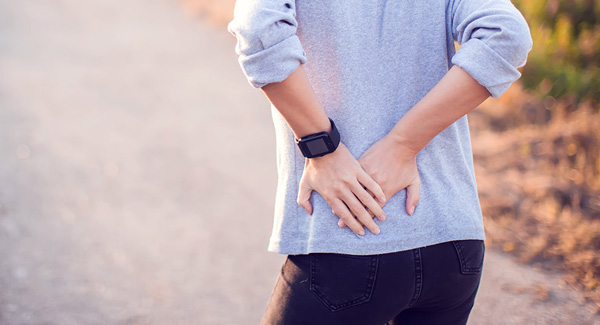Osteoarthritis of the Hip
Hip OA can limit your daily life, but treatment can ease your pain.
By Jennifer Cuthbertson | Updated Oct. 15, 2021
The hip is the second largest weight-bearing joint, second only to the knee. It is a ball-and-socket joint, with the socket formed by part of the pelvic bone (acetabulum) and the upper end of the thigh bone (femur) as the ball.
Smooth, slippery cartilage covers the surfaces of the ball and socket. It pads and protects the bones, allowing them to move easily. With OA, a degenerative joint disease, the cartilage wears away over time. The bone ends get rough and the space in the joint narrows with less cartilage. The bones rub against each other and bone spurs grow, causing pain.
Causes of Hip OA
There is no single cause of osteoarthritis. These factors make you more likely to develop it.
- Age.
- Family history.
- Injury to the hip, even an old one.
- Being overweight or obese.
- Improper growth of the hip joint, known as hip dysplasia.
Symptoms of Hip OA
Symptoms usually develop slowly and worsen over time. You may feel worse in the morning or after sitting or resting for a while.
- Pain in the groin is the most common symptom. You may also feel pain in the thigh, buttocks or down your leg to the knee.
- Crepitus is the grinding noise and “locking” or “sticking” that you feel when you move your hip.
- Stiffness in the hip joint makes it difficult to walk or bend.
- Decreased range of motion in the hip may affect your ability to walk and cause you to limp.
Diagnosing Hip OA
To make a diagnosis your doctor will ask you questions and examine your body for these signs and symptoms.
- How far your hip will move in different directions.
- Signs of injury.
- Grinding (crepitus) when you walk.
- Problems with the way you walk.
- Pain when pressure is applied to the hip.
Your doctor also will likely order X-rays, which can show a thinning of the joint space, any changes in the bone and bone spurs (bony points on the edges of the joint). Sometimes, magnetic resonance imaging (MRI) or other imaging techniques might be used to get a picture of the hip that includes both bone and soft tissue.
Treatments for Hip OA
There is no cure for OA. However, you can treat your symptoms and find pain relief.
Non-Drug Treatments
Try these self-care basics to help ease your pain and stiffness and help you walk better.
- Topical creams that include ingredients like capsaicin, camphor or CBD.
- Exercise, especially water aerobics and swimming, are good choices.
- Physical therapy or occupational therapy.
- Weight loss.
- Cane or walker.
- Hot or cold packs, acupuncture, massage.
Drug Treatments
When pain keeps you from doing what you need to do, medication may help.
- Oral medications that include acetaminophen (Tylenol) and nonsteroidal anti-inflammatory drugs (NSAIDs, such as Advil and Aleve) can help ease pain.
- Gel or creams that include an NSAID (Voltaren), lidocaine (Aspercreme) or slicylates that can be rubbed on the sore area.
- Corticosteroids (glucocorticoids), also called "steroids," can be taken by mouth or injected into the joints. The injections provide short-term relief and may be given up to three or four times a year.
Surgical Treatments
If pain continues even with self-care and medicine, your doctor may recommend surgery.
- Hip resurfacing involves removing damaged bone and cartilage and replacing them with a shell made of metal. The “ball” part of the joint is not removed. Instead it is capped with a smooth, metal covering.
- Total hip replacement (arthroplasty) involves the removal of the damaged hip socket and the head of the femur. They are replaced with parts made of metal, plastic, ceramic or some combination.
- Osteotomy is rarely used. In this, the bones are cut or shaved down to realign the joint.
Diagnosed With Osteoarthritis?
Get the latest news and tips about living with OA in the Living Your Yes! e-newsletter.



